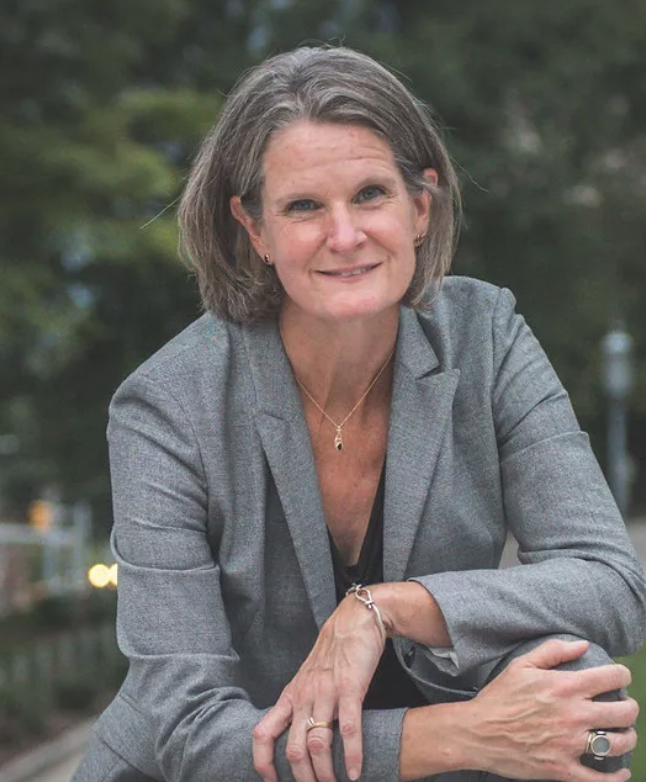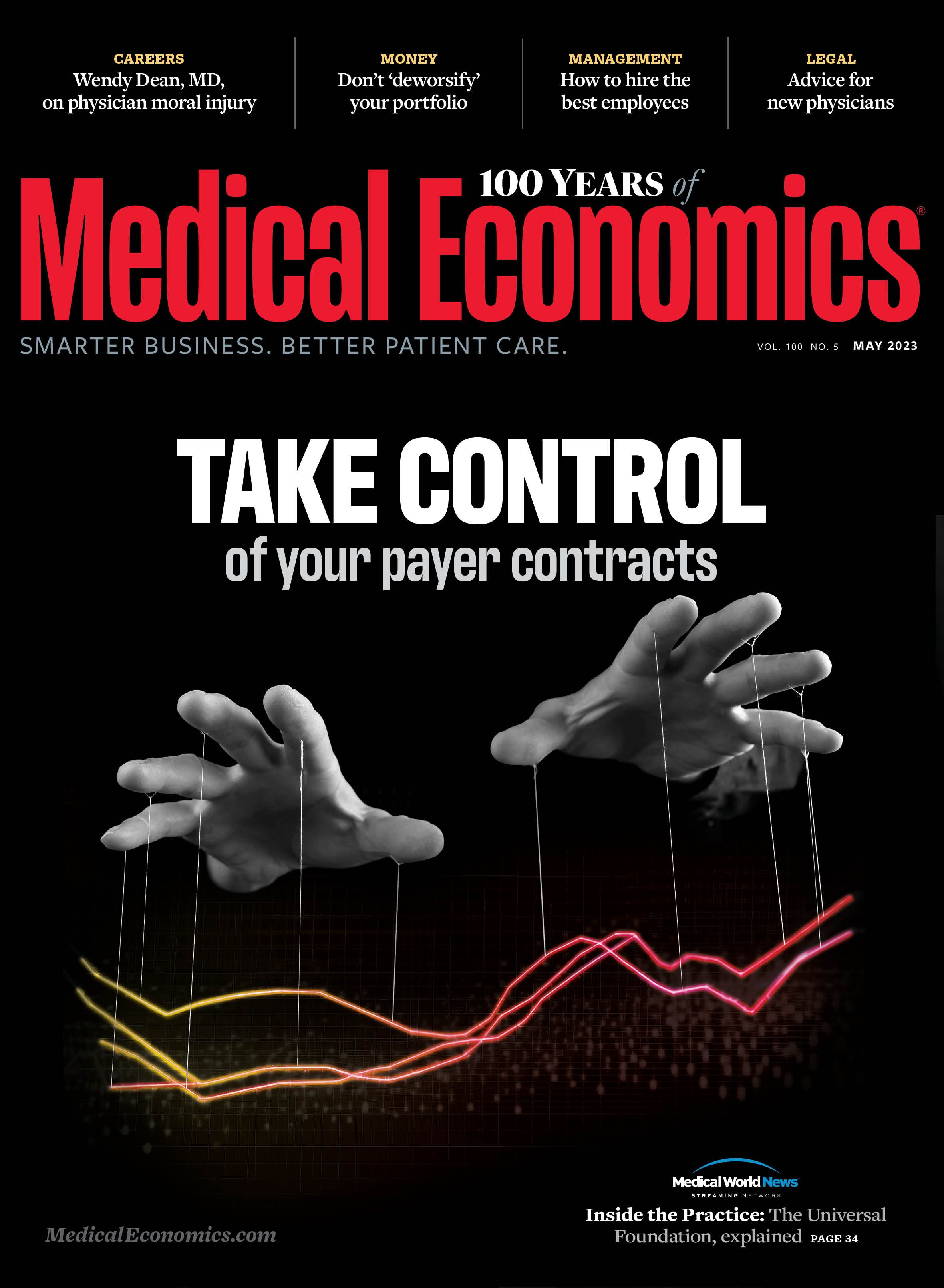Publication
Article
Medical Economics Journal
Physician author takes on physician moral injury
Author(s):
New book by Wendy Dean, M.D., discusses the disconnect between physicians’ ethics and beliefs and our health care system.
Physician burnout is discussed constantly, even if overcoming the challenge is not so easily done. But many physicians believe the concept of burnout undersells the true nature of the distress and disconnect that some clinicians feel practicing medicine today. Enter Wendy Dean, M.D., a psychiatrist who has worked to popularize the concept of “moral injury” in health care.
Wendy Dean, ©Wendy Dean

Dean’s latest effort is a book, released April 4, called “If I Betray These Words: Moral Injury in Medicine and Why It’s So Hard for Clinicians to Put Patients First,” co-written with Simon Talbot, M.D. Dean discussed moral injury and her new book with Medical Economics. This interview was edited for length and clarity.
Medical Economics: What do you mean by moral injury?
Wendy Dean, M.D.: Moral injury is this sense of feeling as if you’re betrayed by somebody in a position of authority in a high-stakes situation. And that situation causes you to transgress your deeply held moral beliefs and expectations. And in medicine, those beliefs and expectations are the oaths that we took to put our patients first.
Medical Economics: What’s the difference between moral injury and burnout?
Wendy Dean, M.D.: That’s such a great question, and it is one that we get all the time. Some people think that we’re saying burnout doesn’t exist. In fact, that’s not at all the case. I think that they are two distinct entities that can coexist. They can exist on their own; they can influence each other.
The way we’ve tended to think about the relationship between the two is that burnout is the set of challenges that you find in your workplace, the demand-resource mismatch: “I’m doing too many clicks (in the electronic health record, or EHR); I have too many tasks; I’m seeing too many patients; I’m understaffed. If you can relieve those pressures, my work will get easier and I won’t be quite so strained.” That’s the operational challenge of health care.
Moral injury, on the other hand, is the relational challenges of health care: “I feel like I need to practice in this particular way, and I’m not allowed to do that.” Say that I think there’s a patient that I’m seeing who should be referred to a specialist, and the best doctor in town belongs to a different health care system. My system does not allow me to refer to that other health care system. And so that becomes a real question of “can I continue to work in this way and still feel like I’m providing my patients the best care possible?”
Medical Economics: You’ve been discussing, writing about and speaking about moral injury for some time now. Why did you decide to write this book about it now?
Wendy Dean, M.D.: It was never on my bucket list to write a book; I’ll tell you that. But I feel like this is such an important topic right now. We’ve been trying to address clinician distress for half a century and haven’t gotten as far as we’d like to get. And maybe it’s because we haven’t (addressed this aspect). There’s this whole side of medicine, the relational piece that we haven’t been including and that we need to start talking about more.
I also wanted to write this book so clinicians didn’t feel alone. Because we hear so many times, “I thought this was just me.” So, I wanted clinicians to feel like they weren’t alone. Also, I wanted patients to understand why the clinicians that they’re seeing seem distracted or unable to help them. It’s not that they don’t want to; it’s that they have all these other constraints. And so, we wrote it in a narrative nonfiction sort of way; stories backed with data.
Medical Economics: One of the physicians that you profiled, whom you call Dr. Rita, went into direct primary care to try to help herself and her career. Can you briefly explain her story and how it’s worked out for her?
Wendy Dean, M.D.: So, Rita, as you mentioned, is a pseudonym for a physician who served in the Army for seven years, went and took care of wounded service members coming out of Iraq and Afghanistan. She spent seven years in wartime as a clinician whose word was law. Then she came out into civilian practice afterward and recognized that despite her leadership training, despite her leadership skills, that wasn’t what was valued. What was valued was her ability to bill, her ability to keep patients within the system that she was working in and her ability to move them through and document on time. And she realized that her problems or her issues with her system were bigger than just her EHR. Which is what she thought it was when she came out of a room one day, having spoken to a patient who was now terminal, who needed an end-of-life discussion, whose wife wasn’t yet aware of just how bad his condition was. And she found her physician EHR coach waiting for her. And that coach said, “Oh, can I help you? Can I show you some shortcuts?” And she’s saying, “Hang on, I know the shortcuts. This patient needed me and needed my presence. And so, you know, that’s what I chose to do. I chose to care for my patient, not the system.”
Shortly thereafter, she left and went into direct primary care. And it really changed how she approaches medicine. She’s back to loving the practice of medicine itself. She always cared deeply for her patients, but being able to control the practice of medicine, how she sees her patients, how she interacts with them — that gives her deep satisfaction. The challenge is running the business side and making it profitable enough. And by profitable, I mean sustainable. She’s not out to make a killing; she’s not out to make big bucks. She’s out to take care of her community. So, it is working for her. But it’s no easy task.
Medical Economics: The subtitle of your book contains the term “put patients first.” What happens to doctors when they can put patients first?
Wendy Dean, M.D.: There is a relief that is deeply satisfying; it feels like that was what we thought practicing would be. In residency, you don’t get a choice. For the most part, your patient comes first if they’re in crisis; you don’t go home. It doesn’t matter if it’s your birthday or your anniversary, or your partner’s birthday or your kid’s; the patient needs you. So, we’re working then in alignment with our values and our goals. It’s deeply satisfying. And the corollary is: If we can’t do that, it becomes intensely frustrating and demoralizing.
Medical Economics: This is a book not just for other clinicians; it’s also for patients. Are patients surprised about this? What has been the reaction from patients about what their clinicians are going through?
Wendy Dean, M.D.: So many are just shocked. And they say, “I had no idea how hard this was.” What was interesting was just before the first time that we talked (Medical Economics interviewed Dean in January 2020), we had our first in-person public event on moral injury in Boston. And Simon Talbot, M.D., my co-founder and co-author, was with me, and one of his patients had come to the event. They had known each other for three or four years. And his patient said to him, “I never had a hint of what was going on for you. I’m speechless about this.” So, I think it’s eye-opening what happens in health care behind the scenes that patients don’t see. I think it’s bringing a new understanding and empathy for what clinicians go through, and how hard they work to protect their patients from that.
Medical Economics: The last time we sat down to talk was right before the COVID-19 pandemic. And a lot has happened since then. I’m wondering, since COVID-19, have things gotten better or worse when it comes to
moral injury?
Wendy Dean, M.D.: If you look at all the numbers, it’s gotten worse. So, in 2019, 44% of physicians said that they were burned out; in 2020 it rose to 63%. So, they were already burned out, and then the great resignation or the quiet quitting, or whatever you want to call it, hit health care. And so, nurses are leaving; doctors say that they have a greater intent to leave. They’re going more to part time.
I think by all measures, moral injury is worse. It’s been a three-year deployment with very little downtime. The push to get back to business as usual is understandable. At the same time, it just feels relentless to the frontline workers. And so, if they can’t get a break where they work, they’re finding ways to get a break outside of that work. And often that means either retiring early, finding a new job temporarily or stepping aside from that work for a little bit. I think it did shine a light on what the challenges are in health care. Unfortunately, it hasn’t moved us toward solutions any quicker.
Medical Economics: Many larger health organizations and practices across the country are starting to create more wellness initiatives within their organizations.
Do any of these help clinicians?
Wendy Dean, M.D.: That is both necessary and insufficient. I mean, people are hurting now; they need something now. So, if we can provide them symptom relief, we should do that. At the same time, we need to address the underlying issues, the operational inefficiencies that make their jobs harder, ask them what they are — they know, right? And then work hard to fix those. But at the same time, work on becoming a more trustworthy organization, work on aligning values between the organization and the health care workers. Make sure that we’re attending to the relational ruptures that have come with the moral injury that folks have been experiencing to a great extent.
Medical Economics: In the conclusion of the book, you acknowledge that there’s no simple solution to this problem. Obviously, the first step is awareness. But beyond awareness, what can be done? It feels like such a difficult problem with many facets, different institutions, different competing interests. What is the next step?
Wendy Dean, M.D.: The next step is curiosity. And that runs both ways. So, what I would say to physicians is invite your managers, your administrators or executives to follow you around for a day. What I heard was an executive who had worked in health care for 20 years, was not a clinician but had a family member who is a clinician, and said to me, “Until my family member was struggling and took the time to explain to me exactly what the challenges were, I had no idea. I had no idea what the barriers were; I had no idea the magnitude of the challenges that you faced.” So, help your leadership understand what those challenges are. Invite them to see it firsthand. If you’re an administrator, also share with your clinicians what your own challenges are, because until we start to understand both sides of this challenge, there’s no way that we can work together to come up with a better solution.
2 Commerce Drive
Cranbury, NJ 08512
All rights reserved.






